Trenchless Technology for a Sustainable Future
With the rate of U.S. population growth and the intensity of climate change, the need for water conservation has never been more pressing. Considering the diminishing levels of vital water bodies like Lake Mead, dropping to the lowest level since 1937, the consequences of water scarcity are evident. One crucial aspect of water conservation involves the careful management of water and wastewater infrastructure systems. As a leading infrastructure rehabilitation provider, our focus at PURIS is to provide cost-effective and time-efficient solutions for addressing aging water or wastewater infrastructure issues. Along with improving sustainability, our trenchless solutions minimize environmental impact and disruption within the community.
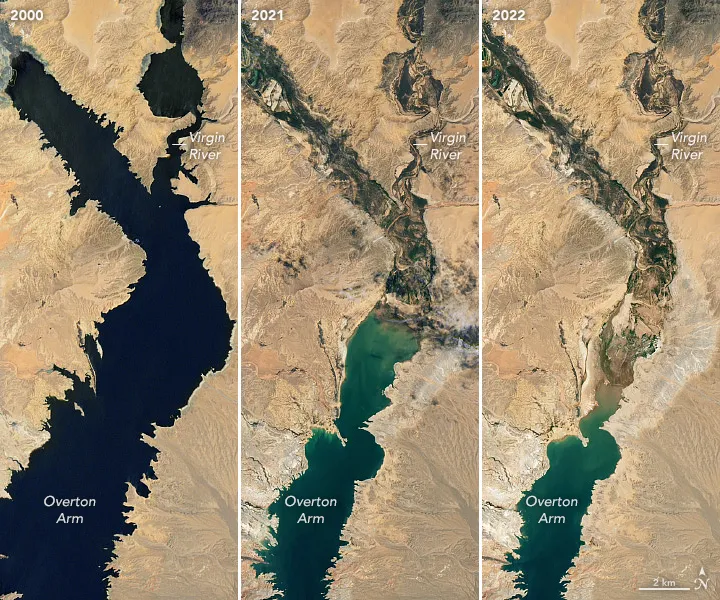
Lake Mead Water Level 2000, 2021, 2022

Potable Water
Each day, six billion gallons of potable (treated) water are lost across the United States. This staggering figure serves as a call to action for municipalities across our nation to address faulty piping and other contributors to this vast waste of treated water. In addition to inexcusable wastefulness, neglecting water infrastructure systems costs taxpayers billions of dollars annually, not to forget the inconvenience of system outages and subsequent boil water notices.
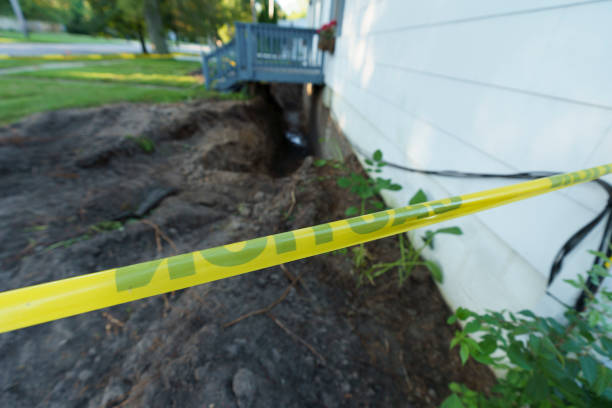
Wastewater
The U.S. Environmental Protection Agency, or EPA, estimates there are at least 25,000 to 75,000 Sanitary Sewer Overflows (SSO) per year. An SSO occurs when a sanitary sewer system releases raw sewage into the environment due to blockages, line breaks, inadequate capacity, or other issues. These types of releases can contaminate the water supply resulting in serious water quality problems, and/or back-up into homes causing property damage and threatening public health.
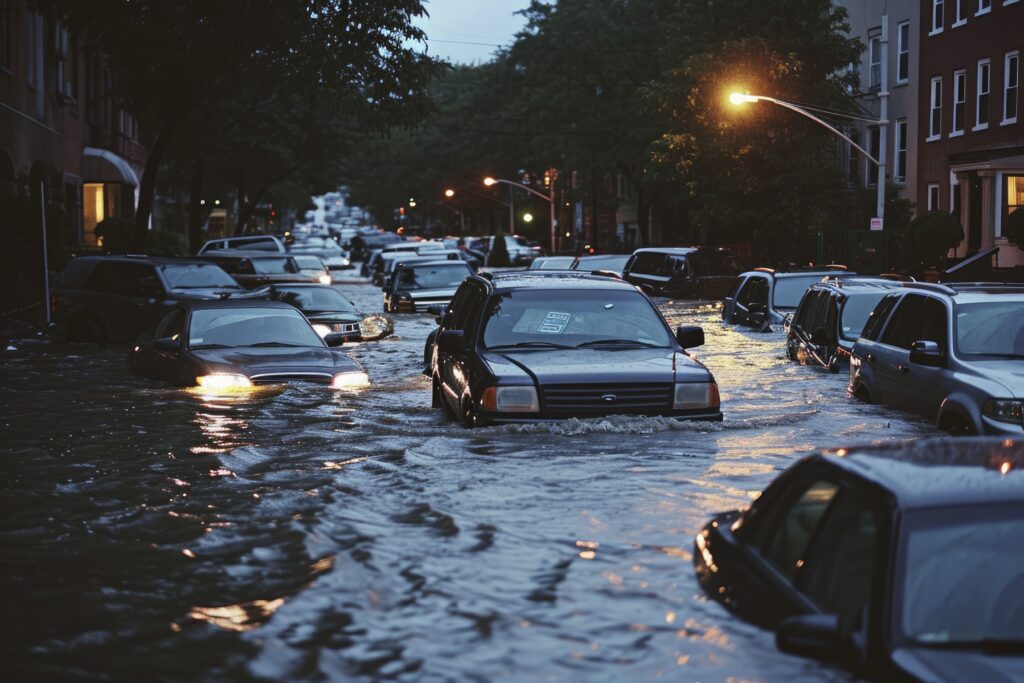
Stormwater
Maintaining stormwater systems and infrastructure for collection, storage, and movement of stormwater is vital to protecting our environment, reducing flooding to protect people and property, and creating healthy, sustainable communities. With the successful management of stormwater, streams, rivers, and lakes are cleaner, flood risks are reduced, and the quality of life within communities is improved.
Whether it’s potable water, wastewater, or stormwater infrastructure, these systems have been aging and deteriorating since their original installation, with many reaching the end of their service life. The average age of in-ground pipe in the United States is over 40 years old, with some systems up to 130 years old. The most recent America Infrastructure Report Card rates these systems between a C- and D due to the overall condition and age. Each year the plethora of issues caused by these deteriorating conditions continues to increase, further justifying the urgent need to repair, replace, or upgrade these systems in countless communities across our country.
However, considering the disruption to businesses, roadways, landmarks, and other underground utilities, digging up and replacing these systems is simply not a viable option. Along with community disruption, the negative environmental impact of “dig and replace”, or open-cut construction, is even greater due to construction debris generated and land disturbance, further strengthening the justification for utilizing trenchless rehabilitation technologies.
In comparison to dig and replace, trenchless pipe rehabilitation reduces land excavation by over 10 times. For example, in the project illustration below, 500 feet of potable water distribution line needed to be replaced. Completing this scope via open-cut construction would have result in 6,000 cubic feet of land excavation whereas trenchless (pipe-bursting) technology that was utilized only required 528 cubic feet of land excavation.
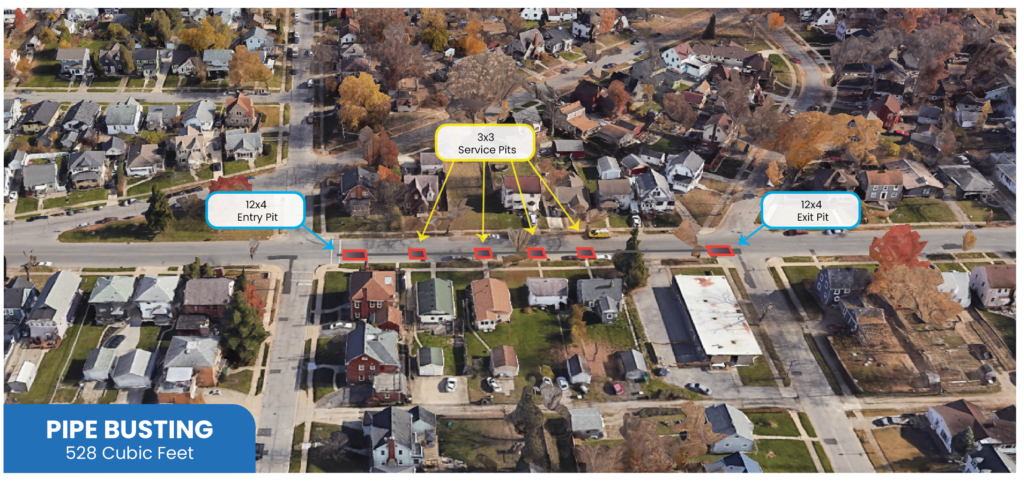
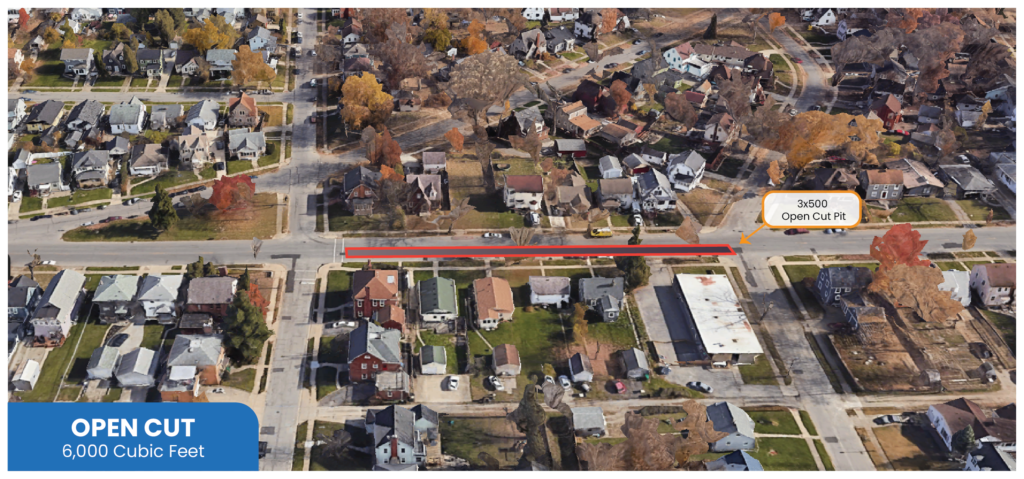
As a result, several tons of debris was diverted away from our landfills. This trenchless technology method also reduced fuel consumption and greenhouse gases that would have been generated by construction machinery used in dig and replace.
At PURIS, we embrace responsible waste management practices and are committed to the reduction of our ecological footprint. With hundreds of miles of pipe rehabilitation performed each year, we divert thousands of tons of debris from landfills, reduce greenhouse gases, and save millions of gallons of fuel by reducing machinery requirements and project duration.
These metrics are a testament to our commitment to environmental stewardship and the broader goals of ESG sustainability. By embracing advanced, environmentally friendly pipe rehabilitation technologies, we aim to reduce our ecological footprint through:
 Trenchless technologies offer safer working conditions, lower project costs, and less environmental impact than open-cut methods while being more efficient and productive than conventional methods. This operational efficiency allows funding to extend farther allowing us to rehabilitate the most amount of infrastructure possible.
Trenchless technologies offer safer working conditions, lower project costs, and less environmental impact than open-cut methods while being more efficient and productive than conventional methods. This operational efficiency allows funding to extend farther allowing us to rehabilitate the most amount of infrastructure possible.
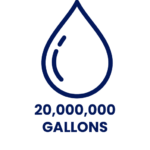 Aging of potable water distribution lines cause a water break in the U.S. every two minutes. With over six billion gallons lost per day; this is not only wasteful but a major misuse of taxpayer funding. It’s estimated that 207 gallons of treated water per year is saved for every foot of repaired/replaced pipe. Using this figure, PURIS saves more than 20,000,000 gallons of treated water annually with over 125,000 feet of potable waterlines rehabilitated each year.
Aging of potable water distribution lines cause a water break in the U.S. every two minutes. With over six billion gallons lost per day; this is not only wasteful but a major misuse of taxpayer funding. It’s estimated that 207 gallons of treated water per year is saved for every foot of repaired/replaced pipe. Using this figure, PURIS saves more than 20,000,000 gallons of treated water annually with over 125,000 feet of potable waterlines rehabilitated each year.
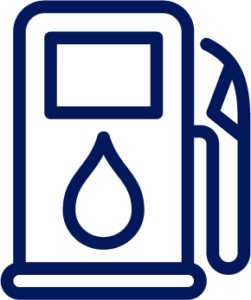 Shorter project completion times in conjunction with less construction machinery required result in reduced fuel consumption. In comparison to dig and replace construction, each year we save more than 40,000 tons of greenhouse gases and over 3.5 million gallons of fuel.
Shorter project completion times in conjunction with less construction machinery required result in reduced fuel consumption. In comparison to dig and replace construction, each year we save more than 40,000 tons of greenhouse gases and over 3.5 million gallons of fuel.
 It is no secret that large-scale construction projects are messy and cause community disruption. Streets, sidewalks, and driveways are usually severely impacted by underground utility construction but with our trenchless rehabilitation technologies we significantly reduce this impact. With 10 times less excavation required compared to dig and replace we reduce land disturbance by over 130 acres each year which is the equivalent to nearly 25 city blocks!
It is no secret that large-scale construction projects are messy and cause community disruption. Streets, sidewalks, and driveways are usually severely impacted by underground utility construction but with our trenchless rehabilitation technologies we significantly reduce this impact. With 10 times less excavation required compared to dig and replace we reduce land disturbance by over 130 acres each year which is the equivalent to nearly 25 city blocks!
By actively managing pipe debris, minimizing disturbances, avoiding landfills, and embracing the culture of sustainability, we contribute to a more resilient future. Each foot of aged pipeline replaced is a step towards safeguarding our environment, preserving precious resources, and building communities that thrive in harmony with nature. To learn more about our ESG story and how our trenchless technologies are making a difference in communities across North America please contact us at [email protected].


